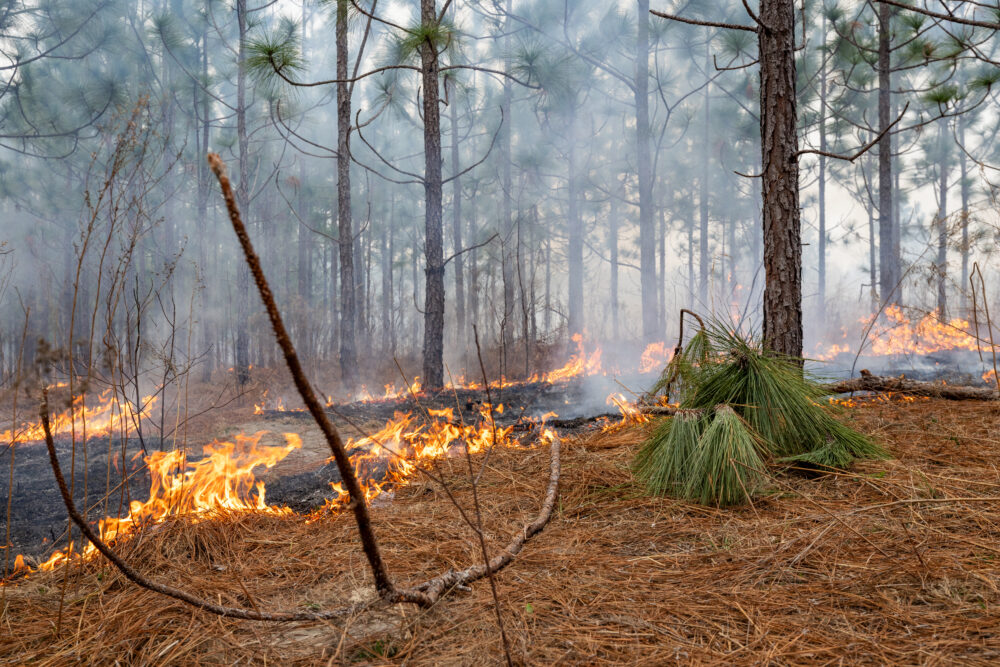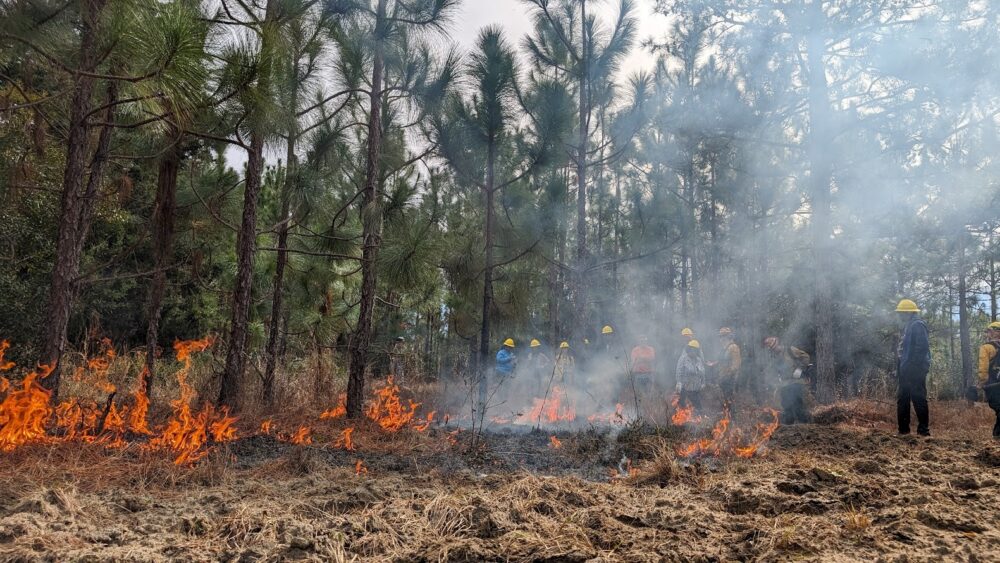We have much more to do and your continued support is needed now more than ever.
The Latest Congressional Threat to Public Lands

The Bureau of Land Management (BLM) is responsible for the management of more than 245 million acres of our nation’s public lands. Much of this land is managed through detailed blueprints called Resource Management Plans (RMPs). These plans guide everything from energy development and grazing to conservation and recreation, ensuring a balanced approach to our shared natural heritage.
Recently, members of Congress introduced resolutions under the Congressional Review Act (CRA) aiming to overturn several of these RMPs. This is a significant move that could reshape how millions of acres of public lands are managed, directly impacting hunters, anglers, and all who value predictable access and responsible stewardship of our public lands.
What the CRA is and How It Works
The Congressional Review Act, enacted in 1996, gives Congress a powerful, fast-track way to overturn “rules” issued by federal agencies. Its purpose is to ensure agencies stick to Congress’s original intent when creating regulations pursuant to specific laws.
Here’s how it works: When a federal agency, like the BLM, issues a new rule, it must send a report to Congress and the Government Accountability Office (GAO). Congress then has a limited “fast-track” period, usually 60 legislative days, to pass a joint resolution disapproving the rule. If both the House and Senate pass this resolution, it goes to the President.

The CRA has been used sparingly, overturning only 20 rules since its creation. Its use often spikes during presidential transitions, allowing a new administration or opposing party to quickly undo regulations from the previous one. Whether intended by Congress or not, the CRA is now a potent political tool for swift policy changes.
The “Substantially Similar” Clause
One of the most controversial parts of the CRA is its “substantially similar” clause. If a rule is overturned, the agency cannot reissue that rule, or a new rule that is “substantially the same,” unless Congress passes a new law specifically allowing it. This means once a policy is repealed, it is essentially blocked indefinitely.
Why does this matter? Well, the CRA doesn’t define “substantially the same.” This ambiguity creates a legal gray area. Agencies trying to address the same issue must guess what Congress considered “substantially the same” and leave courts incredible latitude to make that determination, or risk another repeal from Congress. This can lead to regulatory paralysis, making it hard for agencies to adapt or find new solutions, potentially leaving important issues unaddressed or forcing less effective approaches.
Are BLM Resource Management Plans “Rules”?
A major point of contention in these recent proposals is whether RMPs actually qualify as “rules” under the CRA. This isn’t just legal hair-splitting; it determines whether Congress can legally use the CRA to overturn these plans.
The Government Accountability Office (GAO) recently stated that RMPs do meet the definition of a “rule” under the CRA. It argues that RMPs set “goals and objectives to guide future land and resource management actions” and dictate how millions of acres will be used for decades.
As of August 2025, the administration has not publicly declared whether RMPs formally qualify as “rules” under the CRA. However, historically the Department of the Interior has asserted that they do not. It previously argued that RMPs, developed under the Federal Land Policy and Management Act (FLPMA), have “never been considered rules by the Department of the Interior (Department) or any reviewing court”.
Many environmental non-profits share this concern. This fundamental disagreement sets the stage for potential legal battles and creates significant uncertainty for land managers and users alike.
Currently, certain members of Congress are targeting specific RMPs in North Dakota, Alaska, and Montana with CRA resolutions. These proposals highlight a clear divide in how our public lands should be managed.
Why Proponents Want Repeal
Those supporting the CRA repeals, including members of Congress from the affected states, argue that these RMPs are harmful to state economic development. They claim the North Dakota RMP, for instance, would “crush coal production, close off millions of acres to leasing, and devastate jobs and communities” by restricting coal, oil, and gas development. Similar arguments are made for the Alaska and Montana RMPs, which are criticized for designating conservation areas that block resource development, hindering energy production and job creation.
Why Opponents Resist Repeal
Opponents call these efforts unprecedented and a direct attack on the integrity of public land management. They stress that the targeted RMPs were developed over years with broad public input, including from local communities, Tribes, and interested stakeholders, and that they included extensive scientific review.
They argue that repealing these plans without public hearings or transparency undermines the collaborative process and gives commercial interest greater power and the public less opportunity for meaningful involvement. A recent National Wildlife Federation poll even showed that 75% of voters in North Dakota oppose congressional efforts to eliminate existing public land management plans.

Consequences of CRA Repeal on BLM Resource Management Plans
The repeal of RMPs via the CRA carries the potential for significant and complex consequences for how our public lands are managed, affecting everything from hunting and fishing access to energy development and land sales.
Regulatory Vacuum and Outdated Plans
If an RMP is repealed, management might revert to older, potentially outdated RMPs, which predate current RMPs. For example, North Dakota’s old RMP was adopted in 1988—when no one used things like cell phones, handheld GPS devices, or the internet. These older plans may not account for modern scientific understanding, or current demands for land use.
This means less predictable and outdated management. For hunters and anglers, this could translate to uncertainty about access, changes in habitat management, or delays in permits for recreational activities. Without a clear, modern plan, the BLM could be forced into ad-hoc decisions, making it harder to ensure consistent, science-based stewardship of the lands and wildlife we depend on.
Impact on Oil and Gas Permitting
RMPs are the foundation for oil and gas leasing decisions on public lands. They set the conditions for leasing and ensure environmental compliance. Repealing an RMP could disrupt this framework, creating uncertainty for energy development. While the BLM is required to hold quarterly lease sales when eligible lands are available, the absence of a governing RMP could lead to a less structured permitting environment.
This might mean a return to older, less protective stipulations, or more ad-hoc environmental reviews for individual projects, increasing delays and the risk of litigation. Also, since the One Big Beautiful Bill Act included mandatory leasing tied to RMPs, the absence of an RMP, or reversion to an earlier RMPs could have significant impacts on the amount of acres that must be offered for lease.
Impact on Grazing Leases
Grazing on BLM lands, including the issuance and oversight of permits, is guided by RMPs. RMPs determine which lands are available for grazing, forage amounts, and specific management activities. Grazing permits are typically issued for 10 years, making their renewal a cyclical process tied to current land use plans.
A CRA repeal could significantly disrupt grazing lease administration. Without a current RMP, the BLM’s ability to adjust stocking levels or implement conservation-oriented grazing practices might be constrained. This could lead to less adaptive management, potentially increasing conflicts between grazing and other resource values, or hindering efforts to maintain healthy rangelands.
Effects on Conservation and Recreation
RMPs are crucial for conserving public lands, maintaining intact landscapes, restoring degraded habitats, and designating Areas of Critical Environmental Concern (ACECs). Repealing an RMP could undermine these efforts. It might open up lands to increased development without adequate safeguards, potentially ignoring ecological science and public input.
This could reduce protections for sensitive areas, critical wildlife habitats, and cultural resources—jeopardizing some imperiled species. For hunters and anglers, this directly impacts the health of game populations and the quality of their outdoor experiences.
For recreation, the consequences are also significant. BLM relies on RMPs and adequate staffing to maintain trails, manage campgrounds, and ensure visitor safety. Recent workforce reductions have already raised concerns about caring for public lands and ensuring safe, enjoyable outdoor experiences. Repealing RMPs, which guide these activities, could further hinder efforts to improve outdoor recreation by removing the necessary planning framework.
Broader Concerns: Trust, Litigation, and Long-Term Planning
Beyond specific land uses, using the CRA on RMPs raises broader concerns about the stability of public land management. The immediate invalidation of an RMP and the prohibition on issuing a “substantially similar” rule create significant legal uncertainty for the BLM. This increases the risk of litigation from various groups seeking clarity or challenging management decisions made without a comprehensive plan.
When the CRA bypasses the extensive public engagement and scientific review that go into RMP development, it can erode public trust in the collaborative planning process. If years of public input can be swiftly undone by a congressional vote, it may discourage future participation from local communities, Tribes, and other interested stakeholders. This top-down approach risks alienating stakeholders and making it harder for the BLM to develop broadly supported and durable land management strategies in the future.

Furthermore, the “substantially similar” clause limits the agency’s flexibility to adapt to new information or changing environmental conditions. This hinders the BLM’s ability to engage in adaptive, science-informed management, which is essential for healthy ecosystems and sustainable resource use for generations of hunters, anglers, and outdoor enthusiasts.
Some of the disputes over the contents of RMPs are narrow. Opponents of the RMPs might agree on 80% or more of the planning guidance in the document. However, because of the “substantially similar” clause, agencies may be barred from adopting or implementing the 80% of things everyone agrees upon.
There is a better way. Congress and the Administration are politically aligned, and likely want to see similar outcomes in the disputed RMPs. The Secretary of the Interior can follow existing law and open the disputed RMPs to address the 20% of the RMPs that are disputed without jeopardizing the 80% that everyone supports.
If Congress is successful in using the CRA to repeal existing RMPs, the implications are far-reaching: oil and gas permitting and grazing lease administration could become less predictable, and vital conservation efforts that protect wildlife and habitat could be undermined.
Ultimately, using the CRA in this manner creates tension between congressional authority and the need for stable, science-based, and collaboratively developed land management plans. It risks eroding public trust, increasing litigation, and hindering the long-term, adaptive management necessary to ensure our public lands remain healthy and accessible for all Americans, including hunters and anglers, for generations to come.
David Willms is the associate vice president for public lands at National Wildlife Federation.






















